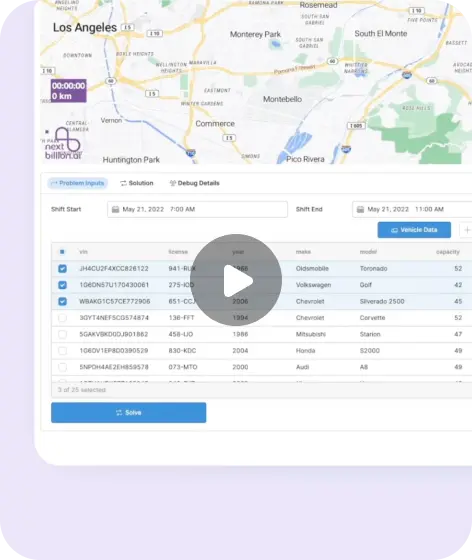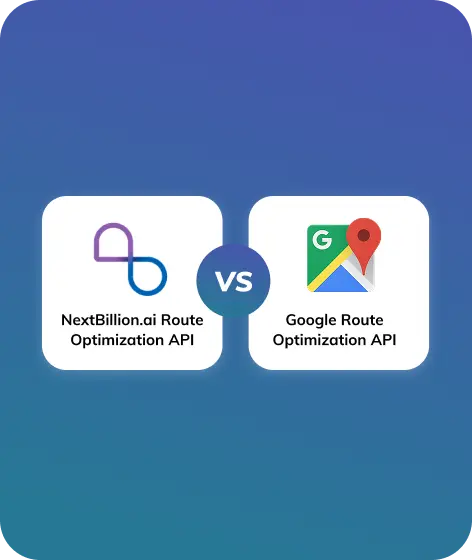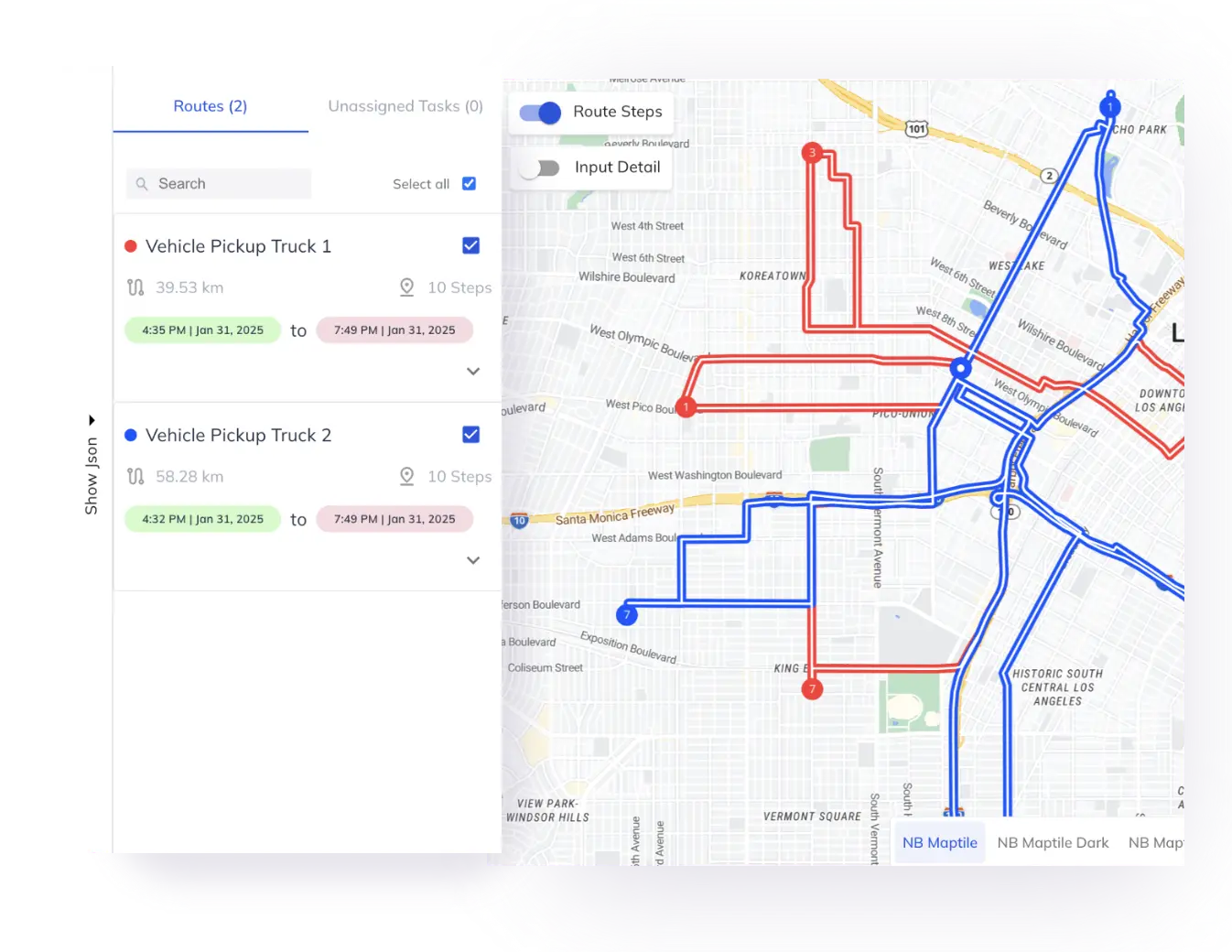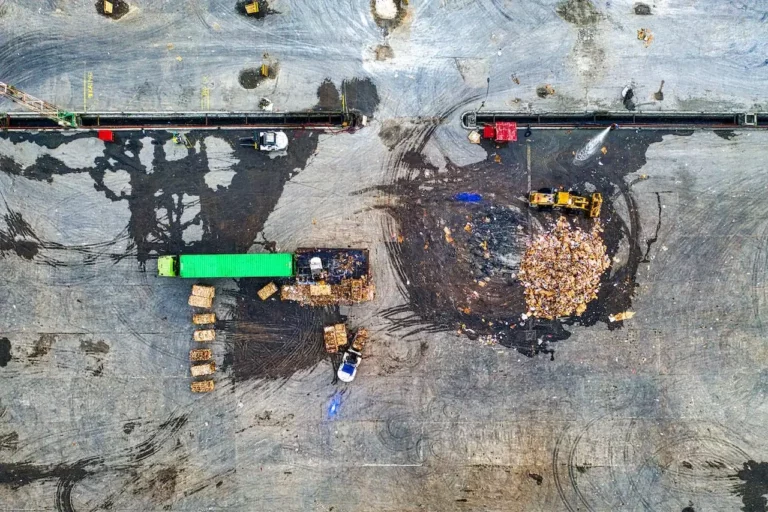
Table of Contents
A few years ago, a delayed delivery was often seen as unavoidable—a product of traffic jams, unexpected roadblocks, or poor route planning. Today, that’s no longer the case. The logistics industry is transforming, driven by location-based technologies that tackle long-standing challenges like delivery delays, fuel inefficiencies, and limited visibility. From real-time tracking to AI-powered route optimization, these innovations are redefining how goods move across the globe. In this artcile, we’ll explore how AI-driven location solutions are reshaping logistics operations and driving new levels of efficiency.
Key Takeaways
- AI-powered route optimization, real-time tracking, and dynamic geofencing are cutting delays, reducing fuel costs, and making supply chains more efficient from start to finish.
- Predictive analytics helps logistics companies forecast demand, manage inventory, and allocate resources more effectively, keeping operations smooth even during unexpected spikes.
- Multi-modal and hyperlocal route planning combine trucks, bikes, and even walking couriers to tackle last-mile delivery challenges, especially in dense urban areas.
- Digital twins simulate entire supply chains in real time, identifying inefficiencies and helping businesses prepare for disruptions before they happen.
- Autonomous delivery systems like drones and self-driving vehicles are becoming essential, and they rely on precise location data to navigate complex environments and meet tight delivery schedules.
The Role of Location Intelligence in Modern Logistics
Ten years ago, a delivery driver wouldn’t have known if an accident had turned the route into a two-hour gridlock until it was too late. Today, AI-powered location intelligence reroutes the truck in real time, sending it down a faster, less congested path, saving time and fuel.
AI analyzes thousands of data points—traffic flow, weather conditions, and historical delivery patterns—to help logistics companies make faster, more accurate decisions. It predicts delays before they happen, reallocates resources to keep operations moving smoothly, and ensures packages arrive on time with greater efficiency. The result is fewer missed deliveries, reduced fuel consumption, and a supply chain that operates with precision from start to finish.
Location-Based Technologies that Are Transforming Logistics
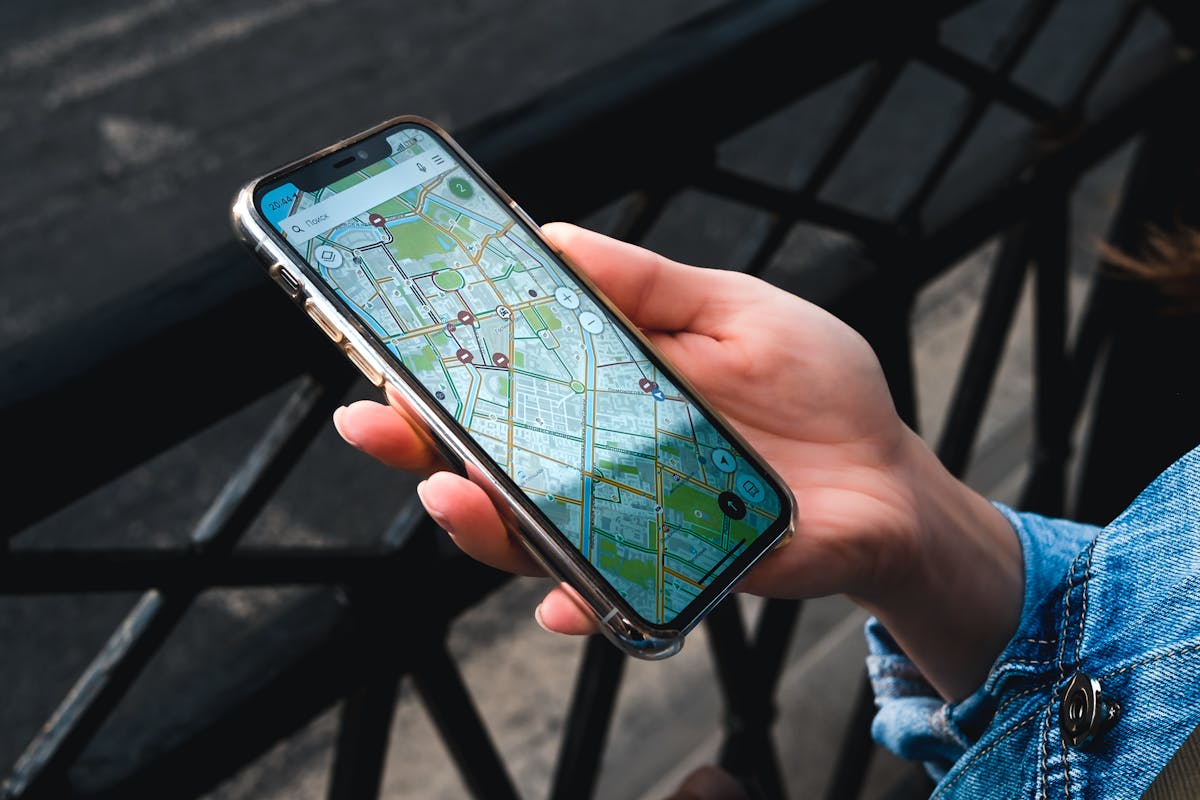
Technology is transforming the way goods move from one place to another. With AI-powered real-time tracking and predictive analytics, logistics operations are becoming more efficient, cost-effective, and seamless. These innovations help streamline workflows, optimize routes, and reduce delays, ultimately improving overall supply chain performance.
Here is a breakdown of the top location based technologies that are refining logistics:
1. AI-Powered Route Optimization and Real-Time Rerouting
Traffic jams, road closures, and unexpected delays have always complicated delivery schedules. AI-powered route optimization can adjust the route before the driver even hits the brake lights. These systems scan traffic data, road conditions, and weather reports in real time, rerouting the truck through faster, more efficient paths.
But rerouting is just one piece of the puzzle. AI-driven route optimization also considers delivery windows, fuel efficiency, driver schedules, and vehicle capacity. It balances these factors to create routes that aren’t just faster but more cost-effective and reliable. It can sequence multiple stops in the most efficient order, reduce idle time, and even adapt routes based on changing priorities throughout the day.
NextBillion.ai’s Route Optimization APIs quietly handle this behind the scenes. The software calculates the smartest way forward, shaving off minutes, saving fuel, and keeping the delivery on track. It integrates seamlessly with existing logistics systems, giving businesses the flexibility to adjust routes dynamically while maintaining full control over their operations. The result is a streamlined, predictable delivery process that reduces costs and improves customer satisfaction—all without manual intervention.
2. Dynamic Geofencing
A truck pulls into a warehouse yard, and somewhere, a logistics manager gets an automatic alert without lifting a finger. That’s dynamic geofencing—virtual boundaries that track every movement, down to the second, without the need for constant human oversight. Dynamic geofencing is changing how logistics companies manage their fleets, warehouses, and deliveries. It sets virtual perimeters around key locations, and when a vehicle crosses into or out of those zones, the system reacts. Deliveries are logged automatically, idle time at warehouses is tracked without anyone standing around with a clipboard, and if a truck veers off its assigned route, the system flags it instantly.
This technology isn’t just reacting to where vehicles are—it’s anticipating how they move. Delivery schedules adjust when trucks are delayed, warehouses know exactly when to prepare for incoming shipments, and fleets can be rerouted in real time based on live traffic and weather data. It makes the entire supply chain more predictable, more transparent, and less dependent on human intervention.
Geofencing also tightens control over high-value shipments. If a truck carrying sensitive goods enters an unauthorized zone or lingers too long at a stop, alerts are sent immediately. This reduces the risk of theft, fraud, and delays without the need for constant manual monitoring.
NextBillion.ai’s dynamic geofencing API https://nextbillion.ai/geofencing-apiintegrates directly into logistics platforms, automating asset tracking and providing real-time visibility. It helps businesses manage resources efficiently and reduce wait times across operations and deliveries.
3. Traffic and Congestion Prediction
Traffic is predictable in the same way weather used to be predictable—you knew it would rain eventually, but not when or where. For logistics companies, that kind of uncertainty costs money. Trucks sit in traffic, fuel burns, drivers wait, and customers get frustrated. Multiply that by hundreds or thousands of deliveries a day, and the ripple effect across the supply chain is massive.
With AI-driven traffic and congestion prediction, logistics companies can see it coming. AI pulls from historical data, real-time traffic feeds, weather patterns, road closures, and even public events to predict where slowdowns will occur. Routes can be adjusted before trucks hit the bottleneck.
But it’s not just about avoiding traffic. Delivery windows tighten, driver schedules become more reliable, and routes are optimized not just for speed but for consistency. Fleets aren’t scrambling to adjust mid-route because the system already factored in the Friday evening rush or the unexpected roadwork downtown.
NextBillion.ai takes this data and makes it usable. Their tools integrate with fleet management systems, adjusting routes in real time and providing accurate ETAs that customers can actually rely on. For logistics companies, this means fewer surprises, lower costs, and a supply chain that moves with precision instead of guesswork.
4. Multi-Modal and Hyperlocal Route Planning
In modern logistics, especially in dense cities where traffic moves slower than a pedestrian on a coffee run, relying on a single mode of transport is a recipe for delays. AI-driven multi-modal route planning weaves together different transportation methods—trucks, trains, bikes, even walking couriers—to find the fastest, most efficient way to deliver goods.
The technology isn’t limited to urban bike messengers zipping through traffic. It’s a critical tool for industries like e-commerce, healthcare, and food delivery, where timing is the whole game. Need to get medical supplies across town during rush hour? AI can figure out that a combination of a truck to the edge of a restricted zone, followed by a bike courier for the last mile, gets the job done faster than waiting out the gridlock. For e-commerce giants, this means meeting tight delivery windows, even during peak seasons.
Hyperlocal planning takes it a step further, dealing with the quirks of specific neighborhoods—narrow alleys, pedestrian-only zones, and timed delivery restrictions. In cities like Mumbai or New York, where a five-minute delay can turn into an hour, AI adapts routes in real time, factoring in traffic patterns, weather conditions, and even local events that could throw a wrench into delivery schedules. It’s not just about speed; it’s about consistency and reliability in environments where unpredictability is the norm.
Beyond improving efficiency, multi-modal logistics reduces costs and environmental impact. Shifting deliveries from trucks to bikes or on-foot couriers for the last mile lowers fuel consumption and helps companies meet sustainability goals without compromising on speed. It also offers flexibility in markets where infrastructure isn’t always reliable, giving businesses a competitive edge by adapting to local challenges.
NextBillion.ai’s APIs handle this complexity behind the scenes. They integrate seamlessly with existing logistics systems, providing real-time data that helps businesses dynamically adjust routes across multiple transport modes. Whether scaling operations from a single city to an entire region or optimizing hyperlocal deliveries in dense urban centers, NextBillion.ai helps companies keeping deliveries cost-effective.
5. Real-Time Tracking

In logistics, knowing where something is at any given moment is the difference between a smooth operation and a customer service nightmare. Real-time tracking offers more than dots on a map—it’s the nerve center of modern supply chains, turning raw location data into actionable insights that keep deliveries moving and customers informed.
For fleet managers, real-time tracking means complete visibility over every vehicle and asset. It’s not just about knowing a truck’s location; it’s about understanding how long it’s been idle, whether it’s on schedule, and if it’s following the most efficient route. If a vehicle deviates from its route or lingers too long at an unscheduled stop, the system sends instant alerts, allowing for quick interventions.
Security is another major benefit. With real-time tracking, companies can monitor high-value shipments from the warehouse to the final destination. Any unexpected detours, or unauthorized stops trigger immediate responses, reducing the risk of theft or tampering.
But the impact doesn’t stop at internal operations. Real-time tracking transforms the customer experience. When businesses can provide accurate, real-time ETAs, it builds trust and reduces the constant “Where’s my package?” inquiries. Customers feel more in control when they can see exactly when a delivery will arrive, and this transparency leads to stronger relationships and repeat business.
NextBillion.ai’s live tracking API makes this level of insight possible. It integrates seamlessly with existing logistics platforms, delivering real-time updates that businesses can rely on.
6. Predictive Analytics for Demand Forecasting and Optimization
Logistics runs on one question: how much inventory, and when? Predictive analytics uses historical data, market trends, and real-time variables to answer with a level of accuracy that was impossible just a few years ago.
Predictive analytics keeps the supply chain moving. It figures out how much to ship, where to send it, and when to scale fleets for busy seasons. If demand jumps in one region—holiday rush, bad weather, viral trend—AI catches it early so deliveries stay on track.
The impact is felt across operations. Warehouses reduce holding costs by minimizing excess inventory. Fleets are deployed more efficiently, avoiding unnecessary trips and fuel expenses. Even staffing becomes easier to manage, with workforce adjustments based on anticipated delivery volumes. When delays or shortages pop up, predictive models help adjust fast, keeping small problems from becoming big ones.
7. Planning and Optimization for Reverse Logistics
The management of returns is a major challenge in logistics. They can disrupt workflows, eat into profits, and complicate already tight delivery schedules.
Completed trip data reveals patterns in return routes, highlighting ways to cut down empty miles and speed up the flow of goods back to warehouses. This improves how returns are handled—whether items are restocked, repaired, or recycled—and reduces the costs tied to moving products in reverse.
Efficient reverse logistics improves inventory accuracy, lowers operational costs, and shortens the time it takes to process returns. It also supports sustainability goals by reducing unnecessary trips and waste. A streamlined process leads to quicker refunds or replacements, improving customer satisfaction.
NextBillion.ai Post Trip Route API provides us with insight into completed trips. This feature is very helpful for logistic companies in refining their reverse logistic strategies. It helps the businesses identify the best routes for return shipments and optimize warehouse restocking strategies.
8. Customized APIs and Solutions for Enterprise Needs
Enterprises don’t just need to move goods from point A to point B—they need to manage complex supply chains, coordinate massive fleets, and ensure every shipment meets strict timelines, regulations, and cost targets. Standard solutions don’t cover that level of complexity.
NextBillion.ai’s APIs are built with these enterprise demands in mind. They integrate with platforms like ServiceNow and Geotab to handle everything from fleet optimization to real-time route adjustments. For businesses managing multi-region operations, the APIs adjust for local regulations, traffic patterns, and infrastructure challenges automatically, whether it’s navigating urban congestion or coordinating cross-border deliveries.
Enterprises also need data they can trust. NextBillion.ai’s APIs feed real-time tracking, predictive analytics, and performance metrics into custom dashboards that align with key business goals—whether that’s reducing fuel costs, improving delivery times, or managing driver performance. These insights help companies fine-tune every aspect of their logistics, from route planning to warehouse restocking.
For industries like retail, healthcare, and manufacturing, where supply chain disruptions can mean lost revenue or compliance risks, customizable APIs ensure operations stay agile. NextBillion.ai’s solutions scale as businesses grow, offering the flexibility to meet changing demands while keeping logistics efficient, reliable, and fully integrated across the enterprise.
9. Digital Twins for Logistics Simulation and Risk Mitigation
In logistics, guessing isn’t a strategy—but testing every scenario in the real world isn’t practical either. The idea behind digital twins is to create virtual replicas of supply chains, warehouses, fleets, and delivery routes, allowing companies to simulate operations, identify bottlenecks, and optimize processes without moving a single truck.
Digital twins sync in real time with live data—traffic updates, weather changes, inventory levels, and more—providing a constantly updated view of the entire supply chain. This lets logistics teams test different scenarios: What happens if a key supplier faces delays? How does a sudden demand spike affect last-mile deliveries? What’s the most efficient warehouse layout for faster order fulfillment?
Beyond simple route optimization, digital twins help companies spot risks before they become problems. They reveal vulnerabilities in delivery schedules, highlight inefficiencies in warehouse workflows, and help fleets prepare for unexpected disruptions, from road closures to supply shortages. The result is a more resilient, efficient supply chain that can adapt quickly to changing conditions.
NextBillion.ai plays a critical role in powering these digital twins. Its location APIs feed real-time data into simulations, providing the accuracy needed for meaningful insights—without learning the hard way.
10. Role in Autonomous and Smart Delivery Systems
Autonomous delivery isn’t science fiction anymore—it’s operating on city streets, in the air, and even along sidewalks. Drones, self-driving trucks, and delivery robots are reshaping how goods move, especially in last-mile logistics where efficiency and speed are critical. But none of these systems function without precise, real-time location intelligence guiding every move.
For drones, AI-powered geospatial data ensures they follow safe, efficient flight paths while avoiding no-fly zones or unexpected obstacles. Self-driving trucks rely on dynamic mapping and real-time traffic updates to navigate highways and urban streets, adjusting routes on the fly to avoid congestion or hazards. Even sidewalk robots need granular, hyperlocal data to maneuver around pedestrians, curbs, and construction zones.
These systems reduce human error, lower operational costs, and offer 24/7 delivery capabilities that traditional fleets can’t match. In industries like healthcare, autonomous vehicles can transport medical supplies with precision, while e-commerce giants use them to meet tighter delivery windows in congested cities.
NextBillion.ai’s location APIs provide the high-precision mapping and real-time data that autonomous systems need to operate reliably—making autonomous deliveries not just possible, but efficient and scalable.
Benefits of Location-Based Technologies in Logistics
We’ve unpacked how location-based technologies are reshaping logistics—now it’s time to pull it all together.
Here’s a breakdown of the core benefits, showing how these technologies drive real impact across logistics operations:
- Enhanced Route Optimization – AI-powered navigation finds the most efficient routes, cutting down on fuel costs and delivery times.
- Real-Time Tracking & Visibility – Full fleet visibility ensures accurate ETAs and smarter resource management.
- Reduced Delays & Bottlenecks – Predictive analytics anticipate congestion and adjust routes in real time to keep deliveries on schedule.
- Improved Fleet Management – Location data offers insights into vehicle performance, driver behavior, and maintenance schedules.
- Increased Security & Asset Protection – Geofencing alerts businesses to unauthorized movements, reducing the risk of theft or loss.
- Better Customer Experience – Precise ETAs and proactive updates build trust and keep customers satisfied.
- Cost Savings & Efficiency – Automation and data-driven decisions streamline operations, lowering overall expenses.
Emerging Trends in Location Logistics Technologies
Advances in location-based technologies are reshaping how goods move, how fleets are managed, and how companies plan for the unexpected. These aren’t minor tweaks to existing systems; they’re shifts that redefine efficiency, sustainability, and competitiveness across the industry.
AI-powered predictive analytics is no longer just optimizing routes—it’s forecasting demand, adjusting delivery schedules in real time, and minimizing delays before they happen. Hyper-precise geospatial mapping is transforming last-mile delivery, guiding drivers through complex urban environments with accuracy down to the last meter. Digital twins are now standard for forward-thinking companies, creating real-time virtual models of entire supply chains to spot inefficiencies and plan for disruptions before they happen.
Autonomous delivery systems—drones, self-driving trucks, and sidewalk robots—are becoming integral to logistics networks, reducing dependence on human labor and pushing the boundaries of speed and efficiency. 5G connectivity is enhancing real-time tracking with near-instant data transfer, allowing fleets to adjust routes and schedules with unprecedented responsiveness. Meanwhile, eco-friendly routing powered by AI is cutting fuel consumption and emissions, aligning logistics with broader sustainability goals.
Blockchain technology is adding another layer, bringing transparency and security to supply chains. It’s reducing fraud, improving shipment tracking, and making every step of the delivery process verifiable and tamper-proof.
These innovations are already here, and companies that integrate them into their operations will move ahead of the curve. The future of logistics depends on smarter, more resilient supply chains built for the challenges of tomorrow.
Ready to Transform Your Logistics Operations with AI-Powered Location-Based Solutions?
In logistics, everything that can go wrong usually does—late deliveries, traffic jams, missing packages, and routes that make no sense. Staying competitive means finding ways to cut through the chaos. Route optimization, real-time tracking, last-mile headaches—they all slow things down when they should be speeding up.
NextBillion.ai doesn’t promise perfection, but it does make things a lot easier. Smarter routes, clearer tracking, fewer delays. It’s about turning logistical nightmares into something that actually works—and maybe even runs smoothly.
Want to see how? NextBillion.ai is ready when you are.
About Author
Rishabh Singh
Rishabh Singh is a Freelance Technical Writer at NextBillion.ai. He specializes in Programming, Data analytics and technical consulting, turning complex tech into clear and engaging content.


